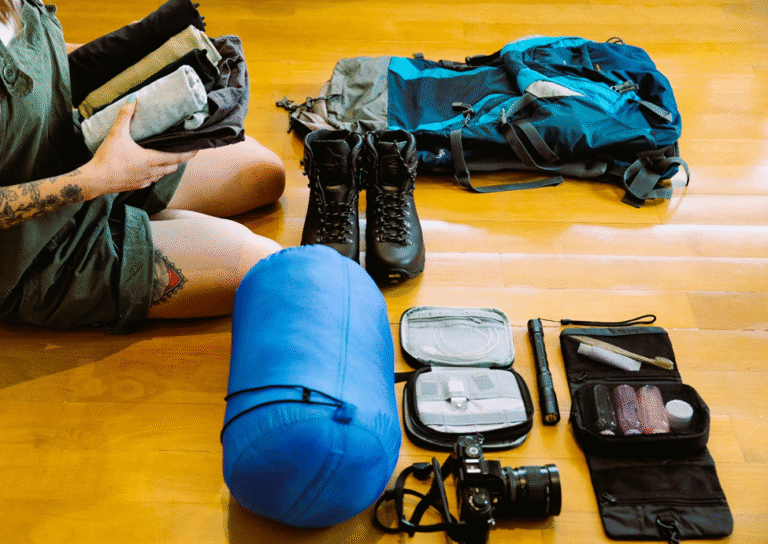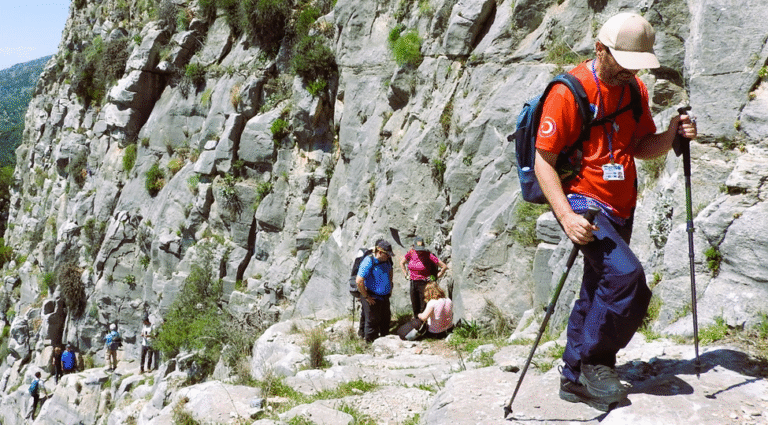
Ticks are small but can cause big health problems. They can spread sickness like Lyme disease and Rocky Mountain spotted fever. Protecting yourself from ticks while hiking is essential when trekking/hiking in woodland or grassy regions. Here are several successful tick-control measures while hiking.
1. Choose Your Trail Wisely
Choose hiking trails that are well-kept and clear. Avoid areas with tall grass, dense brush, or overgrown vegetation. To avoid contact with plants, stay in the center of the trail. This lowers your chances of getting ticks while hiking.
2. Wear Appropriate Clothing
Your clothing could be your first line of defense while hiking. Choose long-sleeved clothing and long pants to protect your skin. Tuck your pants into your socks so ticks can’t climb up. Light-colored clothing makes ticks easier to identify. Wear clothes with permethrin to keep ticks while hiking away.
3. Use Insect Repellent

When hiking, use insect repellent to keep ticks away. Choose one with at least 20% DEET or picaridin. Put it on exposed skin and follow the directions. Reapply if you sweat or go swimming. This helps to keep ticks while hiking off your skin.
4. Stay on Established Paths
Stay on clear, well-used paths and avoid walking through thick plants or bushes. Leaving the trail makes it easier for ticks to get on you. Walking on trails helps keep you safe from ticks while hiking. This easy tip can stop tick bites when you hike.
5. Keep Your Gear Ticked-Free
Be aware of your gear while hiking. Keep your backpack and gear away from tall grass and bushes. After your hike, check your gear for ticks before bringing it inside. This helps prevent ticks while hiking from entering your home.
6. Perform Tick Checks Regularly
Make it a habit to check for ticks when hiking. Look over yourself, your clothes, and your gear every few hours. Pay close attention to warm, sweaty areas like your armpits, groin, and behind your knees. Finding ticks while hiking early can help stop diseases they might carry.
7. Check Your Pets for Ticks

If you hike with pets, check them thoroughly for ticks. Ticks can easily hitch a ride on your furry friends. Pay attention to their ears, neck, and between their toes. Use a tick prevention treatment recommended by your veterinarian.
8. Be Aware of Tick Season
Ticks are most active during warm months. Spring to early fall is when ticks are most active. Be extra careful during this time. Educate yourself about the types of ticks while hiking and their activity levels.
9. Know the Symptoms of Tick-Borne Diseases

Awareness of symptoms is essential. Common signs of tick diseases are fever, rash, and feeling tired. If you notice any symptoms after trekking, seek medical attention. Early diagnosis and treatment are essential to providing care.
10. Remove Ticks Promptly and Properly
If you find a tick on your body, act quickly Use fine tweezers to grab the tick as close to the skin as you can. Pull upward with steady, even pressure. Clean the bite area with rubbing alcohol or soap and water afterward. This reduces the risk of infection.
11. Educate Yourself and Others
In the world of ticks, information is power. Learn how to stop ticks while hiking and share it with your family and friends. The more people are aware about ticks and how to protect themselves, the safer it will be to spend time outdoors, while hiking.
12. Consider Vaccination Options
Some tick-borne diseases, like Lyme disease, have vaccines for pets. While there is no human vaccine currently available, staying informed about ongoing research is helpful. Watch for new progress in making vaccines. Vaccines can be an important tool for overall protection in the future.
13. Understand Tick Life Cycles
Understanding the tick life cycle might help you determine whether to be cautious. Ticks develop in four stages: egg, larva, nymph, and adult. Because of their small stature, nymphs are particularly prone to disease transmission. Being aware of when each stage is active can help you plan your outside activities.
14. Use Natural Tick Repellents
If you prefer natural products, look into essential oils. Citronella, eucalyptus, and lavender essential oils may be effective tick repellents. Combine these oils with a carrier oil and apply to your skin. Natural tick sprays may not work as well as store-bought ones.
15. Stay Hydrated and Healthy
A healthy immune system can help fight infections. Stay hydrated and eat a balanced diet. Regular exercise strengthens your body and helps you enjoy outdoor activities. A healthy lifestyle can enhance your overall outdoor experience.

Stay safe from ticks while hiking. Wear the right clothes, check for ticks, and follow these tips. Be ready and enjoy the outdoors without worries!
FAQ’s
What clothing should I wear to prevent tick bites?
How can I effectively use insect repellent against ticks?
When is tick season, and when should I be extra cautious?
What should I do if I find a tick on my body?
How can I check my pets for ticks after hiking?






